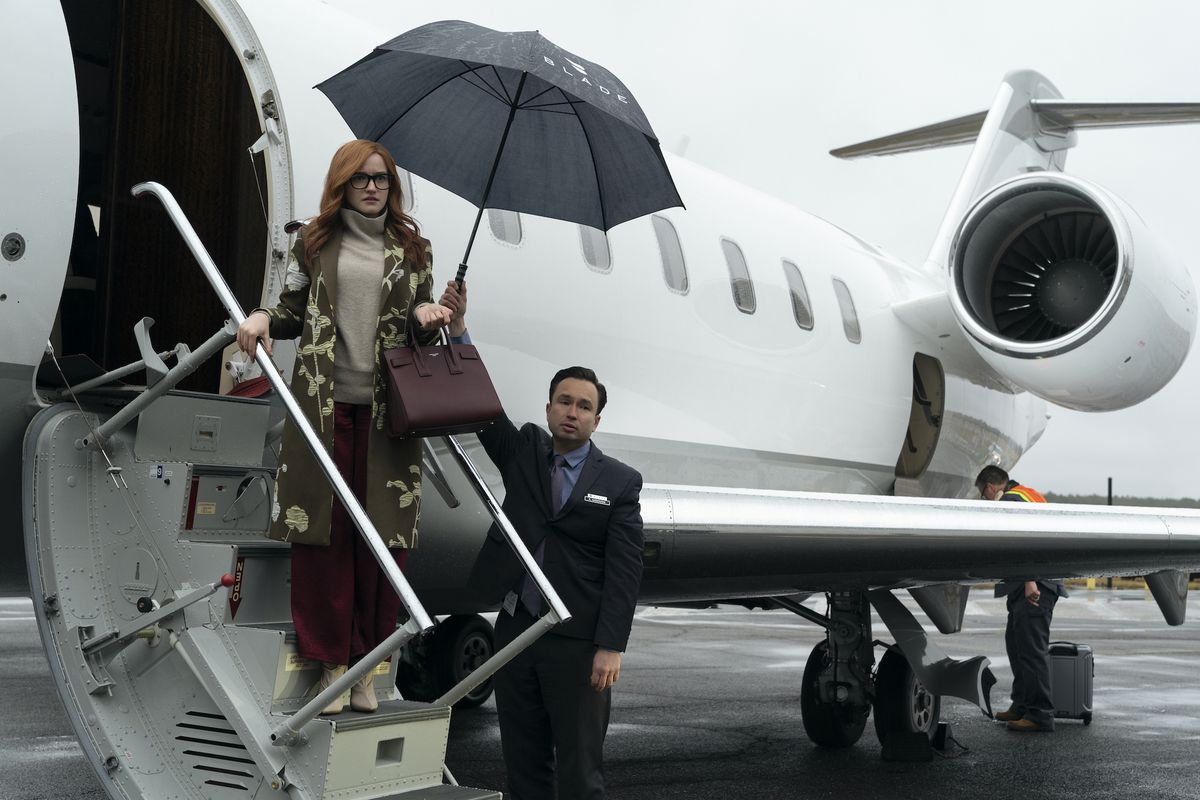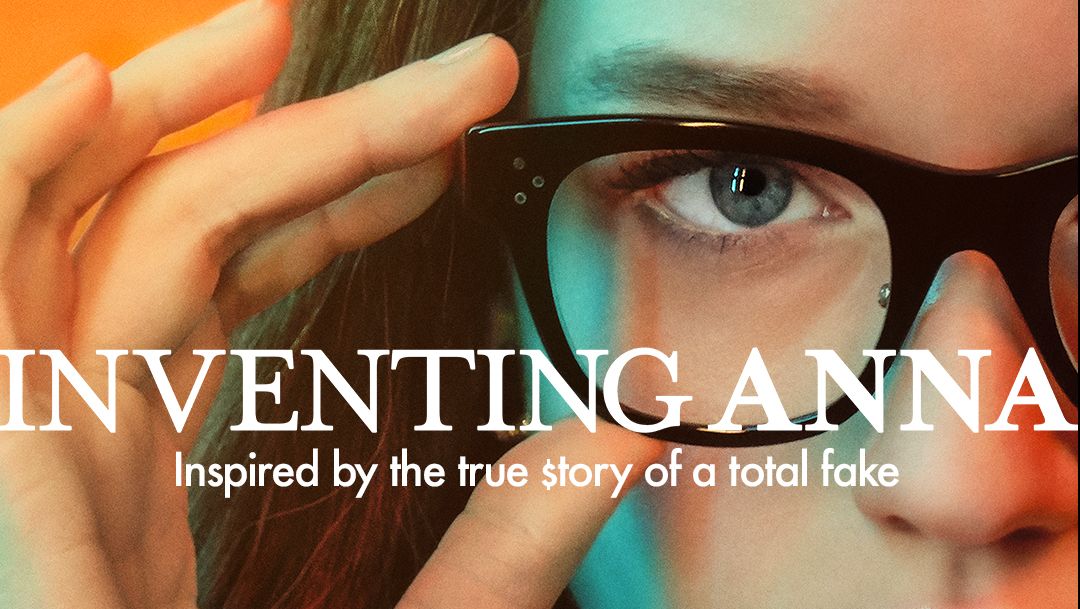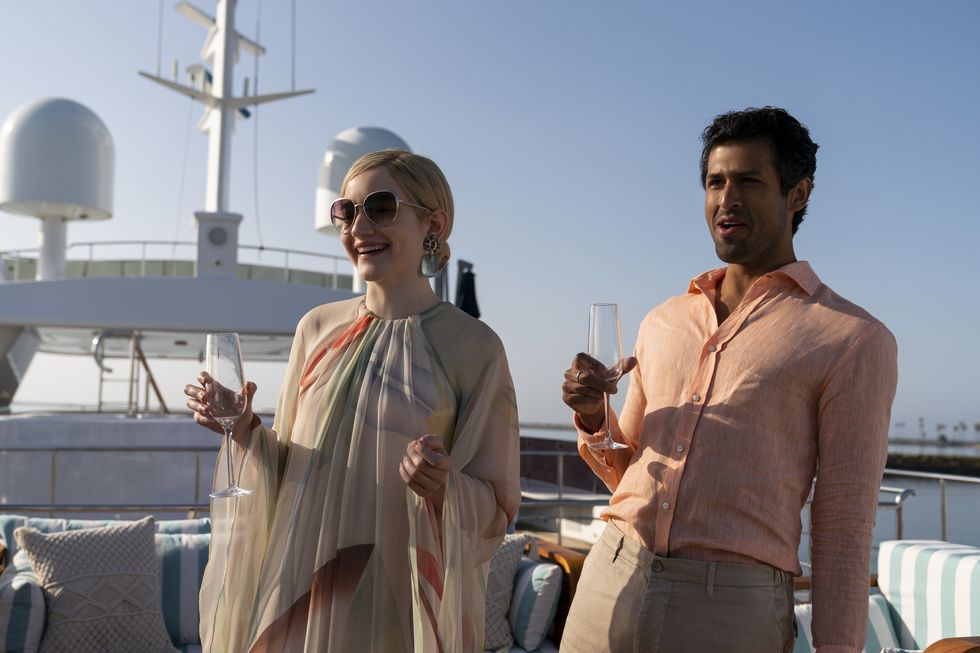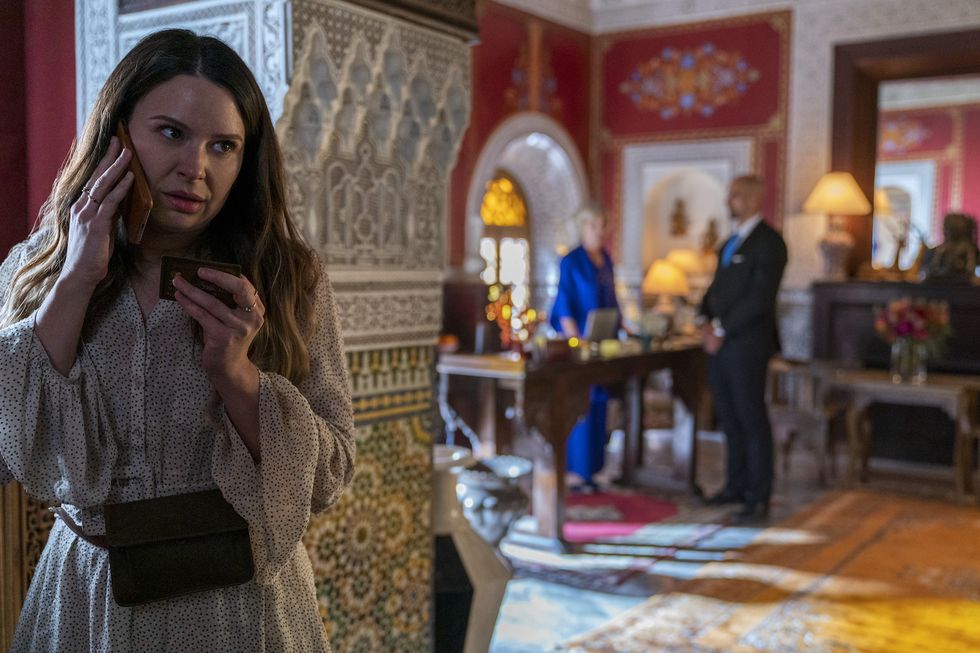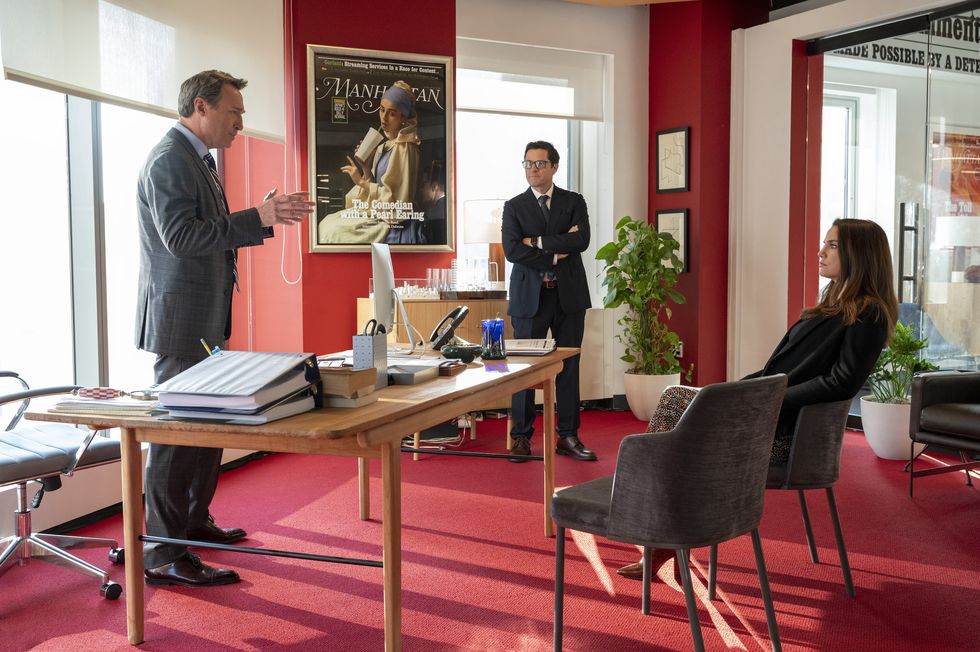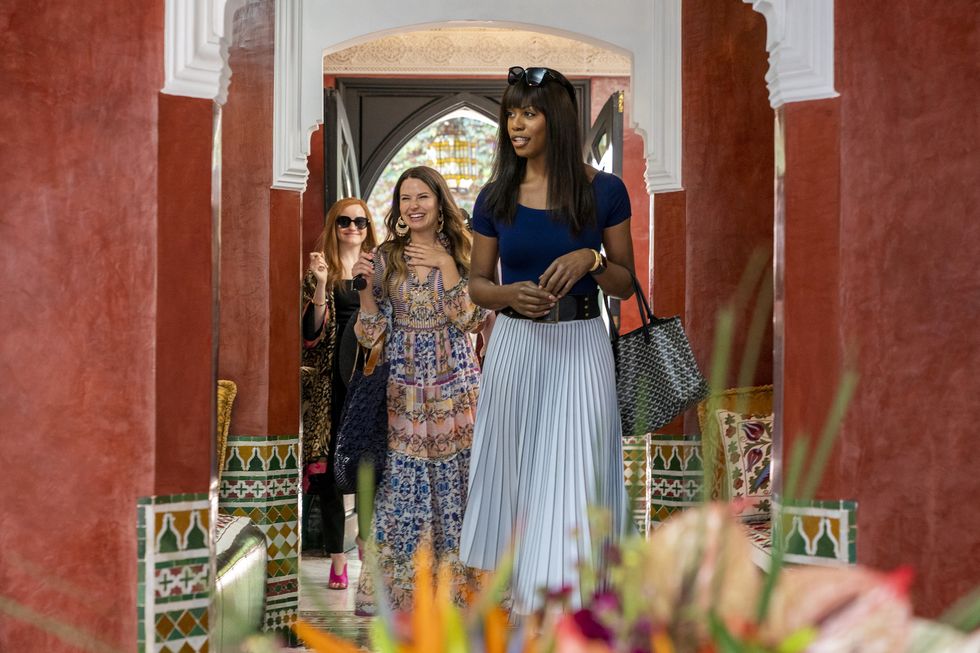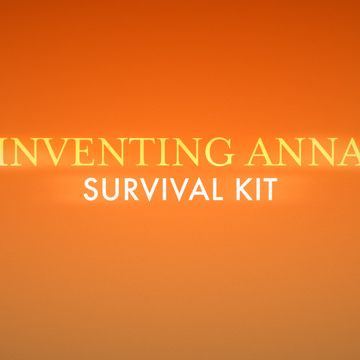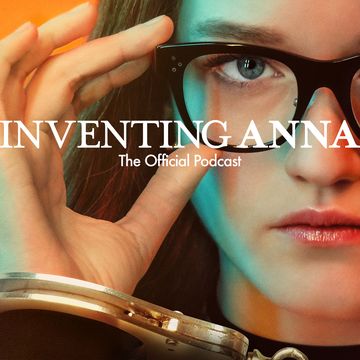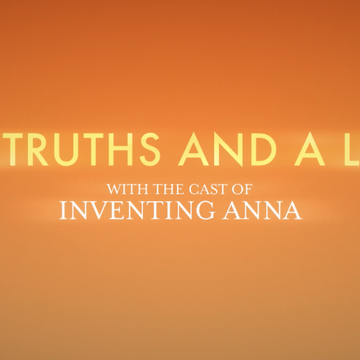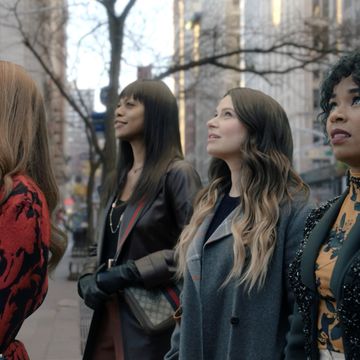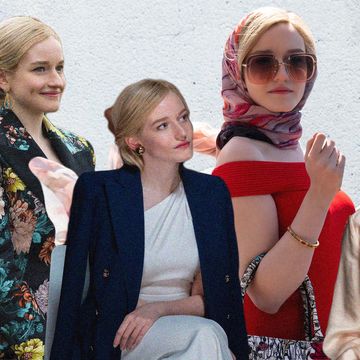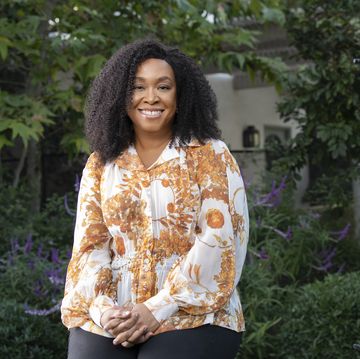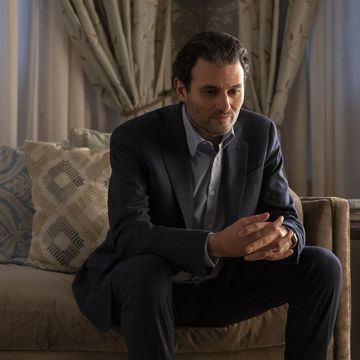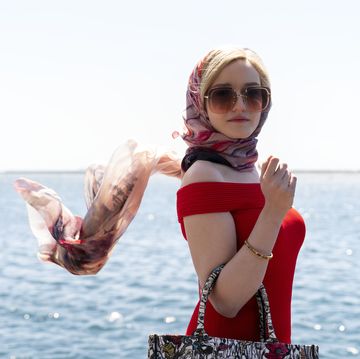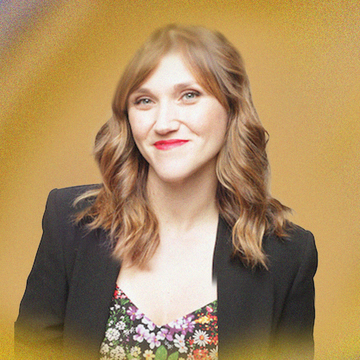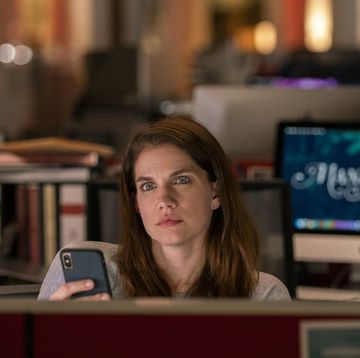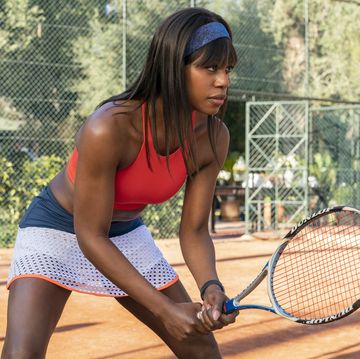Beyond their engaging characters and dramatic story arcs, TV shows like Gossip Girl, Downton Abbey, The Crown, and Bridgerton are so much fun to watch for another reason: They open doors to worlds — royal England, elite NYC high schools, etc. — that, for most of us, are closed off in real life. Shondaland’s newest Netflix series, Inventing Anna, gives yet another option, showing us a slice of life that may be exclusive, but one that we know exists all around us, just out of reach, in one of the most famous cities in the world.
New York City has always been a bastion for up-and-comers — for better or worse. After European immigrants pushed out Native Americans and settled the land, they transformed what were once farmlands into the beginnings of a massive industrial hub. Over time, the new rich (e.g., the Rockefellers) took money, power, and claim over the city from the old rich (e.g., the Astors). Immigrants from Italy, Ireland, China, Latin America, and Africa gathered on — or were brought to — the skinny island with hopes and dreams of making it. And throughout New York’s history, that idea of making it has encompassed everything from starring on Broadway to becoming the head of a global financial firm to designing the skyscrapers, directing the movies, and establishing an unrivaled art world. That aspirational quality has always been a part of New York City’s fabric.
So, even if Inventing Anna production designer Henry Dunn feels the term is overused, “an aspirational look” and feel is where he began his designs for the series.
“The more I read about Anna Delvey and her trial, the more I realized that this was going to be a fantastic opportunity as a production designer because it was so recent,” says Dunn, whose credits include Netflix’s When They See Us and Amazon’s Z: The Beginning of Everything. “It’s super-fresh in everybody’s minds, and all these places are known quantities in New York City — the hotels, the restaurants, the people involved. It was an exciting story to get to design, especially since it’s about somebody who’s pretending to do something that’s real, which is exactly what we do in television all the time.”
Joining Dunn and the crafts team behind the camera was cinematographer Maryse Alberti, who, due to the disruption of the pandemic shutdowns and scheduling conflicts, enlisted David Franco, Manuel Billeter, Tim Norman, Jeff Jur, and Edward Pei to step in when she could not work. Alberti worked with creator and showrunner Shonda Rhimes to create the look for the series, while the other directors of photography carried that visual through line for the show’s directors: Ellen Kuras, Daisy von Scherler Mayer, David Frankel, and Shondaland alums Tom Verica and Nzingha Stewart.
Dunn and Franco had worked together before on Z: The Beginning of Everything and HBO’s Vinyl, so the ease of their collaboration lent itself well to picking their brains about what it took to create the modern-day world of Inventing Anna. Here, Dunn and Franco, along with Billeter — who primarily filmed the episodes set in the series’ other notable location, Morocco, where Anna scammed Rachel into paying a $60,000 hotel bill — discuss how they drew inspiration from the glamorous and wily character of Anna Delvey herself.
VALENTINA VALENTINI: Let’s go way back to the beginning — what were your first thoughts about how to create the world of Inventing Anna?
HENRY DUNN: In the beginning, we were going to do an exact replica of the New York magazine offices, an exact replica of the hotel, 11 Howard, and Le Coucou. We wanted to make this something that, if Anna Delvey was watching it, she’d be stunned at the re-creation of all these places. But actually, when those places declined to be named in the show, it sort of freed us. I feel like what we ended up creating was sort of like Anna — it was an amplified version of these already iconic NYC locations. And I don’t want to cast any aspersions on 11 Howard hotel, which is a very nice hotel, but we just made everything even more glamorous, even shinier.
And I want to say too that Lyn Paolo, our costume designer, and her lead assistant were more than central to the choices that we made. Lyn wasn’t just designing the costumes; she was designing the costumes to go into a setting where the action is going to take place. It was never time wasted if I just sat down and looked through her presentation boards for a scene and tried to pick up clues as to where she thought that things should go. What she brought to the look of the show was so much more than just costumes — it was inspiring if I was ever at a loss as to what to do.
DAVID FRANCO: I was excited to shoot New York for current-day New York. Henry will know this — I so often end up on period shows, even if it’s not long ago, like the 1980s. But it can be such a head-scratcher to make it work, wondering what you can afford or even when you have to deal with the city to remove cars or signage or something. So, to be able to shoot NYC as is, it was so nice.
HD: The only thing we had to worry about was what level of iPhone was out!
VV: It can be a challenge to work with multiple cinematographers on one show, but due to scheduling demands, it was necessary to do it on Inventing Anna, as is the case on many TV shows. That being said, tell us about your contribution to creating the show’s visual aesthetics, David.
DF: Maryse set up the look, but as each DP [director of photography] shot their episodes, I could see an evolution in the look and style depending on the director, who would have been evaluating the visuals depending on whose perspective they were shooting from and which locations. So, the look became much more flexible as the series went on and adapted to the mood and the locations. When I got on board, I went back to Maryse to understand her thought process better and then tried to infuse my own work into it. You know, every director brought their style to it, and there wasn’t a rigid set of rules, cinematographically speaking.
VV: What were your visual goals in general since this show spans so many cities and indoor and outdoor locations?
DF: On every project I do, my goal is to try to focus energy on whoever’s point of view the story is being told from, and to make sure the camera follows their perspective. The way I shot Inventing Anna was dictated by Anna’s point of view or Vivian’s point of view. From each of those perspectives, I wanted to create as much definition as possible from a character’s point of view. And then it was important to show the glamor of this life. It’s why everybody is so fascinated about this character who can thrive in a world she wasn’t a part of at first, and it became accessible to her just because of the sheer chutzpah she had. We didn’t want to do a dark story of her going to jail; we wanted to show the glossy side of it all and make it as inviting as possible with the energy and movement conveyed by the camera and lighting.
HD: David said something really key — and it’s what I hope people take away from the show — that they show up because they are interested in how and why Anna Delvey scammed all these people, but then get seduced by her just like these people did. She really pulls everybody in, including those of us working on the show, and you get easily seduced into her side of the story. So, that had to be there in the POV of the camera work to amp up her surroundings so that by the time you see this world of the duplex apartment and the jets and the yachts, it’s like who wouldn’t want to wake up on those 800-thread-count sheets and live in her shoes for a minute?
MANUEL BILLETER: In terms of the overall approach, Maryse wanted the show to look natural and realistic, using mostly flattering soft-light sources, but still create some contrast and not flatten everything out. She also wanted to showcase the glamorous locales most of the story takes place in and the ostentatious behavior on display. In the Morocco episodes, I wanted to shoot wide shots of all the locations not as empty establishing shots, but to bring the audience into that world and really get a feeling for the surroundings — to delve into the world of Anna Delvey’s make-believe and seduction. We also took a slightly different approach visually, depending on whose story we were telling, like Franco said. So, for example, when Rachel starts panicking about the missing payments of Anna, Nzingha [Stewart, who directed the Morocco episodes] wanted to shoot it from her perspective: frenetic, anxious, and very loose. Whereas Kacy’s character, who is more physical and controlled, we resorted to stricter compositions and camera movement. I think it’s always important to ask yourself about the perspective of the story and bring in different nuances, depending on the point of view and inner state of the characters. When Anna is down and out, wandering the city and subway system all alone, living anything but the life she had envisioned for herself, we used some specialty lenses that allowed me to isolate her from her surroundings and introduce a broken atmosphere creeping in.
VV: I know that you all had to contend with a shutdown for the pandemic, and then Covid protocols were in place when you returned to shooting, which made it a mix of on-location sets and built sets. Which scenes were which?
HD: We built the 11 George hotel room and the lobby, Vivian’s house, the duplex apartment — which was one of my favorite sets — and Anna’s lawyer’s home and the WeWork space that he works out of. Manhattan magazine was an entire floor of a building in Midtown that we dressed and turned into a set.
VV: When I interviewed Jessica Pressler, she was so impressed by the Manhattan magazine set. She noticed things like a broken ceiling panel and a thin layer of dust all around that had been re-created exactly like the old New York magazine offices.
HD: I was very happy with it. The decorating department, under George DeTitta Jr., and Dustin Neiderman with the graphics department, they created 150 framed magazine covers for the walls of the Manhattan magazine office. You can only do that with good producing and producers who realize that those details, over the course of [nine] episodes, are going to be the things that keep the set looking fresh — we were changing things around all the time, plants grew and shrank, paperwork got shuffled, bulletin boards were redone to show the passage of time. Our producers really came through and gave us the space to create.
Speaking of dust — we were in the middle of shooting there when we all had to put our tools down and go home because of the pandemic. It was bizarre to walk back into that space after six months, when nobody had been on that floor except maybe a security guard. It was sort of heartwarming to go back in and see that it was still standing. I mean, it was very dusty, and not the dust that was meant to be there like Jessica mentioned, but it was good to see all the details there, and it made us want to go in and really finish this show strong.
VV: Were you actually able to film at Rikers Island?
HD: We were prior to the pandemic and at the Queens Detention Facility. After lockdowns ended, those were no longer options, so we ended up building and re-creating those locations. And we had to get it perfect because some scenes were going to be intercut with things that we already shot at the actual locations, and that was an amazing technical exercise by the art department in trying to exactly replicate two different places. We did very close research on the women’s wing at Rikers where Anna was imprisoned in order to re-create that as best we could onstage. In the waiting area, we put in the same style of tables and chairs, and I think we echoed the real location really well.
VV: How about Morocco? You actually went there to film those scenes.
HD: Yes, we went to the exact same hotel — La Mamounia — and the exact room she had stayed in. That was amazing because the staff remembered her. They knew exactly who she was, and they thought that it was hilarious we were there doing this. I mean, it really was only two years later that we were filming this story, which is kind of legendary at La Mamounia because nobody doesn’t pay their bills.
VV: Manuel, you came in for the Morocco unit. Can you tell us more about shooting at La Mamounia?
MB: Shooting there gave the story a very authentic feeling — we were surrounded not only by the incredible beauty and luxury with every step we took while filming, but also by the shadow of Anna Delvey. Nzingha also wanted to capture the textures, liveliness, and beauty of the city of Marrakech and its inhabitants, and we made sure that we filmed interesting and immersive footage of that, almost documentary style. For a scene that takes place at the museum in Marrakech, our three characters were sitting in an outdoor courtyard area, and I knew that the hot sun would probably cause some problems with the natural beauty that we wanted to maintain, so Henry — being the fantastic collaborator that he is — and his team hung hundreds of feet of a colorful fabric across the courtyard to create an overhead awning. It perfectly blended in with the existing architecture, accentuated the feeling of warmth, comfort, and richness, and enabled me to shoot freely, without much need for extraneous film equipment, to create the desired ambience. I am a firm believer in creating a believable, immersive set for the actors whenever I can without having to set up too much cumbersome technical equipment.
VV: As you said earlier, Henry, you ended up having to re-create the 11 Howard hotel and call it 11 George. Tell me about that.
HD: We did, but even then, we wanted to shoot the hotel lobby on location, but it’s difficult to get a hotel to give over their lobby for what would have been about a 10-day shoot. So, we built it on a stage with a video wall outside that would show all the traffic and pedestrians going by. It’s the first time I’d done something like that, and I think it was pretty successful. We planted on a facade to a building on 14th Street and shot the exteriors there. But building the lobby set ended up being great because we also had some scenes in the back of the house and in that big library where Anna had all those meetings.
VV: And the courtroom?
HD: We took some footage for reference and research in the actual courtroom where she had been, and many of the people in our photographs were people that had been in that courtroom during the proceedings not even that long ago. They were really helpful in talking to us about how she entered and exited the room and how the proceedings went and things like that, which helped us re-create that courtroom onstage to within a hair of its exact self. The only thing we did after a lot of conversation was to add windows. There was such a high page count for scenes in the courtroom that we took the liberty of adding windows that exist in some of the other courtrooms, but not specifically that courtroom, just to give the DP some flexibility on how to light the place.
DF: That’s all we DPs ask! Just give us some windows.
VV: Did either of you get to interact with Shonda Rhimes much? How was it working with a TV veteran like her?
HD: We wanted to illustrate everything and get it to her early in the production process. We sent it out, and Shonda told us that that was exactly what she didn’t want! But then she followed up with what she did want. You know, this isn’t a mind-reading exercise. We sent a drawing of a high-end hotel room, and it was just a different high-end hotel room than what she wanted. She wanted something more modernist and sent us research photographs of Kit Kemp’s work — she’s done the Crosby [Street] Hotel. So, she gave us a specific direction to go in rather than just letting us hang. We turned around and did another set of illustrations, to which she said, “That’s spot on. That’s what we want. Just change the lampshade on the left,” or something like that. I think the only time I ever met Shonda, she was sitting on the floor surrounded by pieces of paper in a producer’s office. I came in to show her something and thought, “Oh, my god, I’m talking to Shonda Rhimes, and she’s sitting on the floor. I should sit on the floor as well.”
Valentina Valentini is a London-based entertainment, travel, and food writer and also a Senior Contributor for Shondaland. Elsewhere she has written for Vanity Fair, Vulture, Variety, Thrillist, Heated, and The Washington Post. Her personal essays can be read in the Los Angeles Times, Longreads, and her tangents and general complaints can be seen on Twitter at @ByValentinaV.
Get Shondaland directly in your inbox: SUBSCRIBE TODAY
